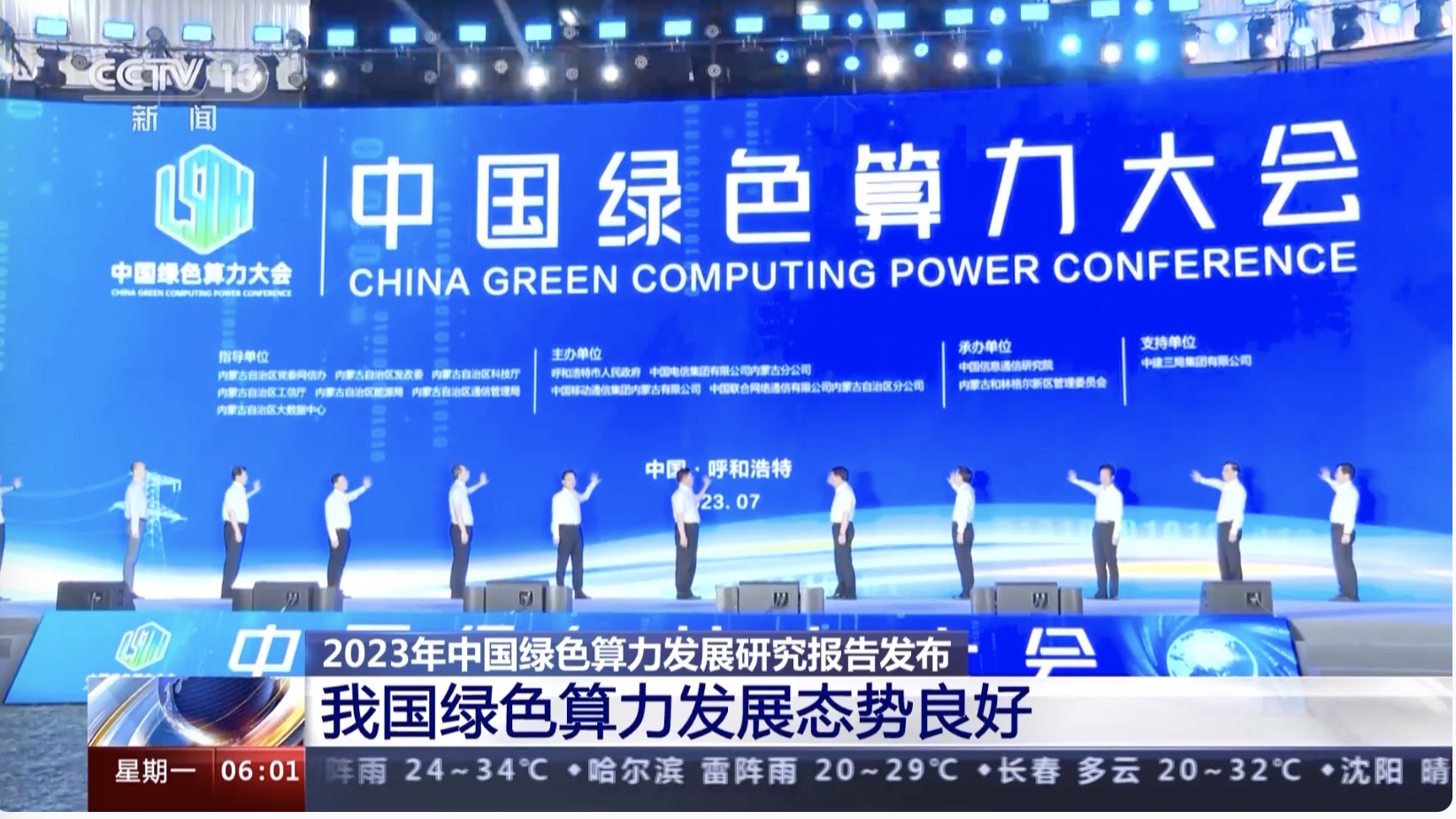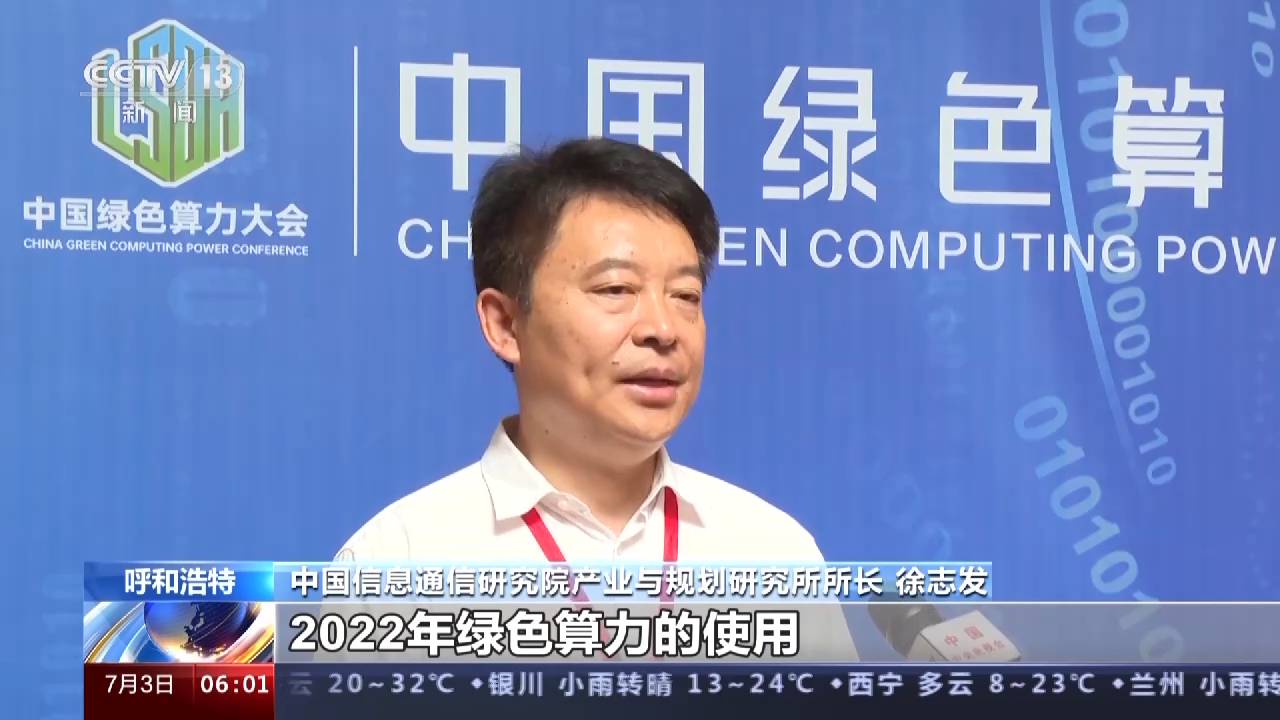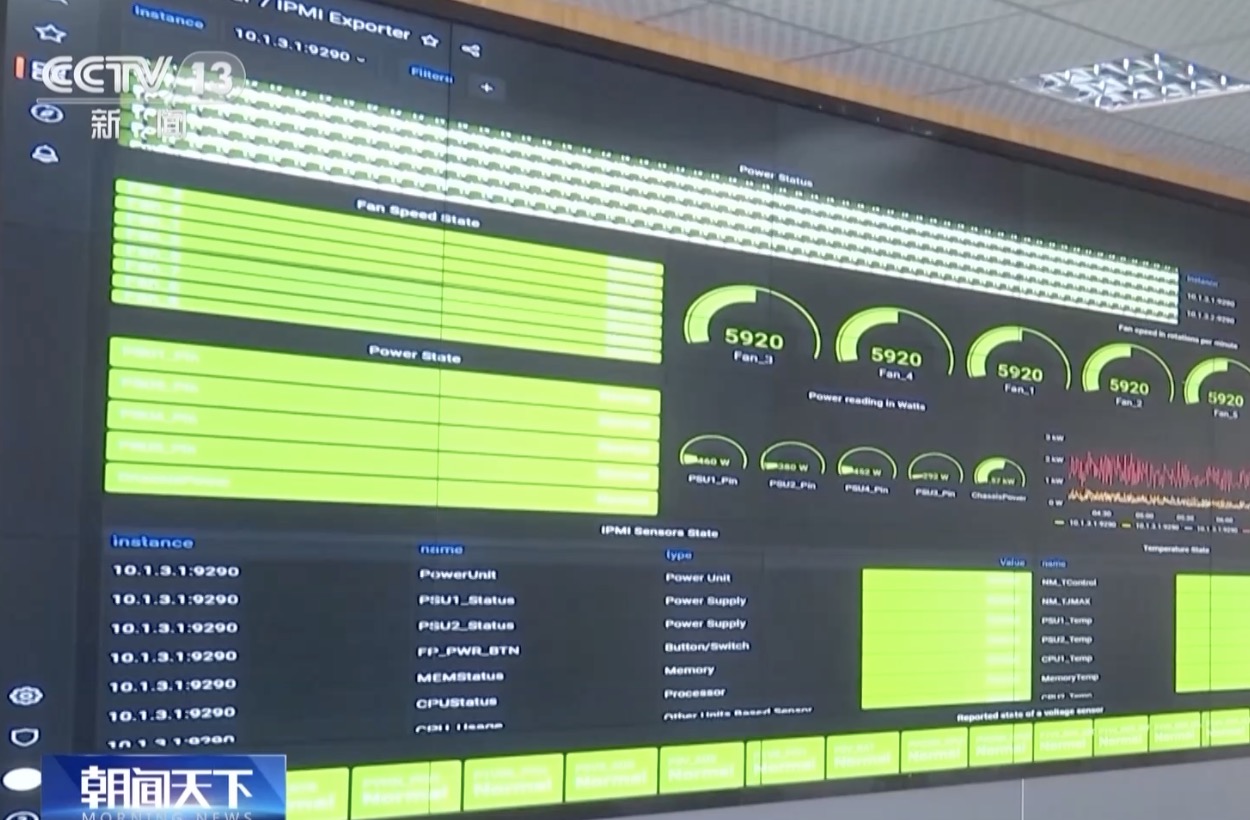
China ranks second in the world in terms of the scale of its computing power, according to the Ministry of Industry and Information Technology (MIIT). /CFP
China ranks second in the world in terms of the scale of its computing power, according to the Ministry of Industry and Information Technology (MIIT). /CFP
As China pledges to peak its carbon dioxide emissions by 2030 and achieve carbon neutrality by 2060, it is striving to establish green and low-carbon data centers with higher computing efficiency and less power consumption.
On Sunday, a development research report on green computing was released by the China Academy of Information and Communications Technology during the first China Green Computing Power Conference.
The report defines green computing power, also called sustainable computing, as the green and low-carbon pursuit of computing power, which is an important goal for its high-quality development.
It established an efficient, low-carbon, intelligent and intensive development framework for green computing power, analyzing development trend of key factors involving its effectiveness, thus to judge the overall outlook for its development in China.
Green computing power aims to maximize energy efficiency and minimize environmental impact in the ways computer chips, systems and software are designed and used, said the report, adding that the development of global green computing power entered the initial stage, and such development in China is in a good shape now.
The conference was held in Hohhot City of north China's Inner Mongolia Autonomous Region from July 1 to 3, aiming to create a platform to showcase the achievements of green computing power, and adding momentum to Hohhot's leading role in China's strategic project that will channel computing resources from the east to the west.

The first China Green Computing Power Conference is held in Hohhot City, north China's Inner Mongolia Autonomous Region, July 1 to 3, 2023. /CMG
The first China Green Computing Power Conference is held in Hohhot City, north China's Inner Mongolia Autonomous Region, July 1 to 3, 2023. /CMG
Green computing for clean energy
Xu Zhifa, director of the industrial planning institute at the China Academy of Information and Communications Technology, told China Media Group (CMG) that the wide-ranging application of green computing power in 2022 led to a reduction in electricity consumption by the whole of society by nearly 19.5 billion kWh, equivalent to the reduction of carbon emissions by more than 16 million tonnes, which is about half annual electricity consumption in the city of Hohhot.
Zhang Jifei, deputy mayor of Hohhot, highlighted the city's exceptional advantages for developing green computing power.
With abundant renewable energy resources, including 57 percent of the nation's wind energy and over 21 percent of its solar energy, combined with a favourably cool climate, Hohhot is an ideal location for the construction of energy-efficient big data centers.
Wang Zhiqin, vice president of the China Academy of Information and Communications Technology, emphasized that computing power will serve as the driving force behind digital development across various industries.
Wang further underscored that China's dual carbon goals and sustainable development strategy will propel the long-term growth of the green and low-carbon computing power industry, facilitating comprehensive digital transformation across all sectors.

Xu Zhifa, director of the industrial planning institute at the China Academy of Information and Communications Technology, talks to CMG during the first China Green Computing Power Conference, July 1 to 3, 2023. /CMG
Xu Zhifa, director of the industrial planning institute at the China Academy of Information and Communications Technology, talks to CMG during the first China Green Computing Power Conference, July 1 to 3, 2023. /CMG
China's mega data project
Currently, China ranks second in the world in terms of the scale of its computing power, according to the Ministry of Industry and Information Technology (MIIT).
As of the end of 2022, the total scale of the country's computing power reached 180EFlops, with an annual growth rate of nearly 30 percent, and the total scale of storage capacity exceeded a trillion gigabytes.
The scale of the core computing power industry reached 1.8 trillion yuan (about $260 billion). The China Academy of Information and Communications Technology estimated that every yuan invested in computing power will result in a 3 to 4-yuan boost for China's GDP.
Along with big-data sector growth, the Ministry of Industry and Information Technology unveiled a plan for the industry during the 14th Five-Year Plan (2021-2025) period.
It forecasts that China's big-data industry will exceed 3 trillion yuan ($474 billion) by the end of 2025, with a compound annual growth rate of around 25 percent.
In 2022, China approved a mega project to build eight national computing hubs and plans to build 10 national data center clusters, an indication of its strategy to channel more computing resources from the country's eastern regions to its less-developed yet resource-rich western regions.
The implementation of the project is conducive to promoting green development and utilizing green energy in the western regions and continuously optimizing the energy efficiency of data centers, said the National Development and Reform Commission.

A system empowered with green computing power. /CMG
A system empowered with green computing power. /CMG
Global challenge of green development
The world is rapidly changing and human beings are working hard to revitalize a sluggish economy and promote green and low-carbon transformation.
Evolving consumer demand, climate change, disruptive technologies and uncertainty about the global economic recovery are all issues that people have to deal with.
Among them, climate change is one of the biggest challenges of our times, and human beings must act urgently to reduce carbon emissions and make the transition to sustainable growth, according to Tao Kuangchun, chairman of KPMG Asia Pacific and China.
In the coming years, digital and green transformation will be the key trends, which bring challenges and opportunities. The two transformations are greatly needed, closely linked and contribute to the success of each other, Tao added.
As a large economy willing to shoulder corresponding responsibilities, China has set an ambitious goal to peak carbon emissions by 2030 and achieve carbon neutrality by 2060.
Achieving these goals won't be easy and needs collective action, as everyone is a stakeholder in tackling global climate change, and it is imperative for various parties to strengthen cooperation and make innovation a major driver of global digital development, said the expert.